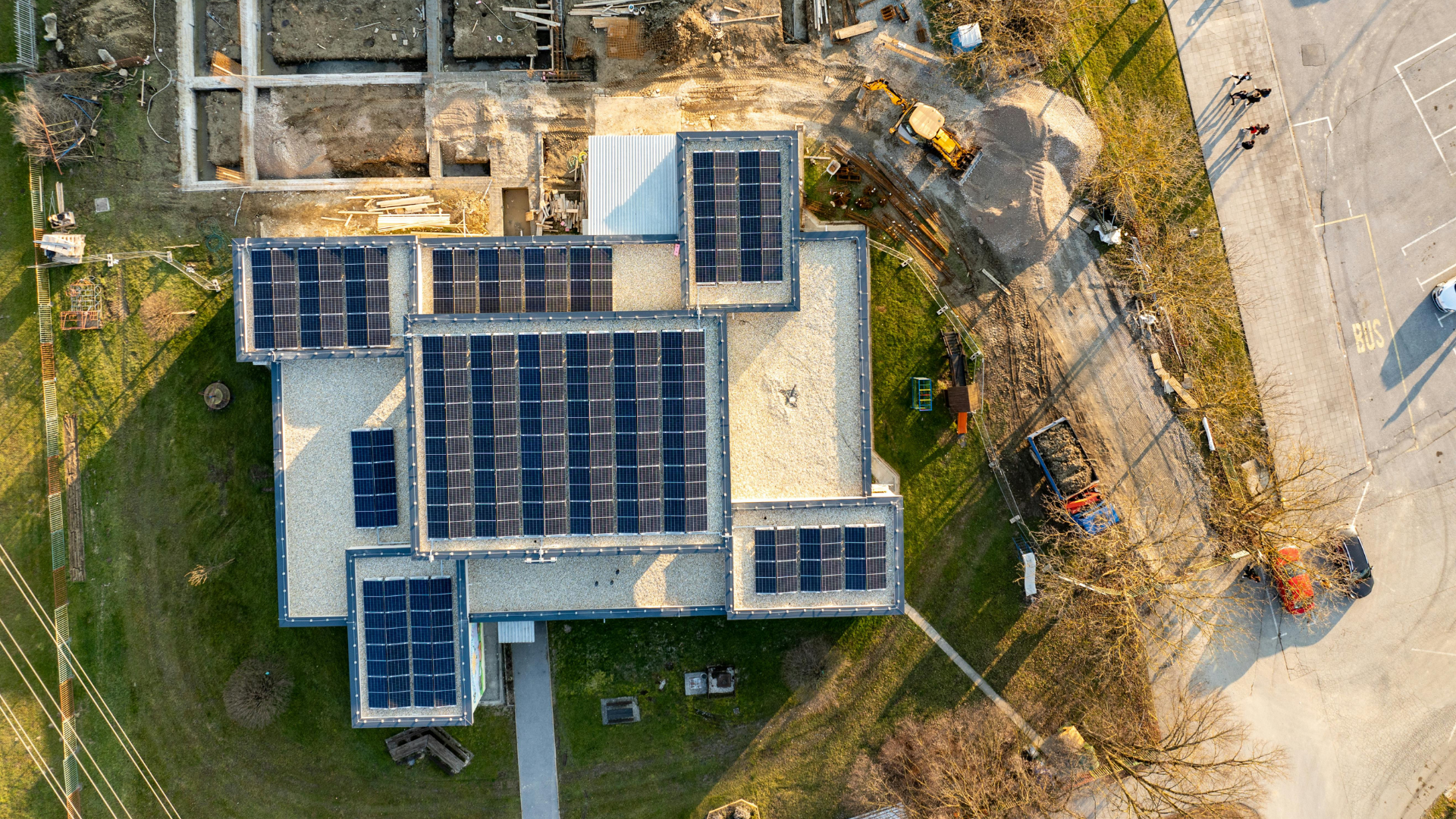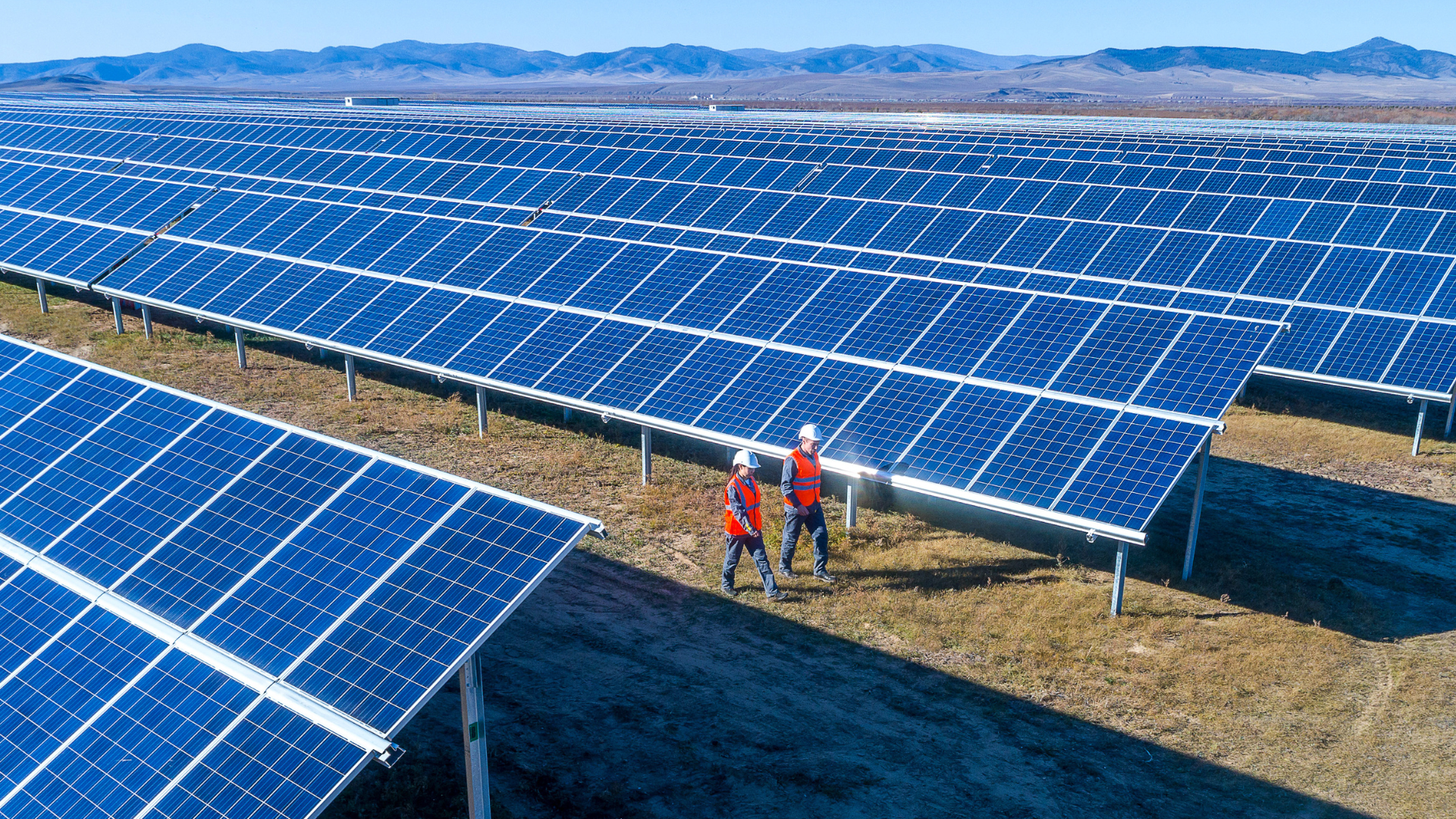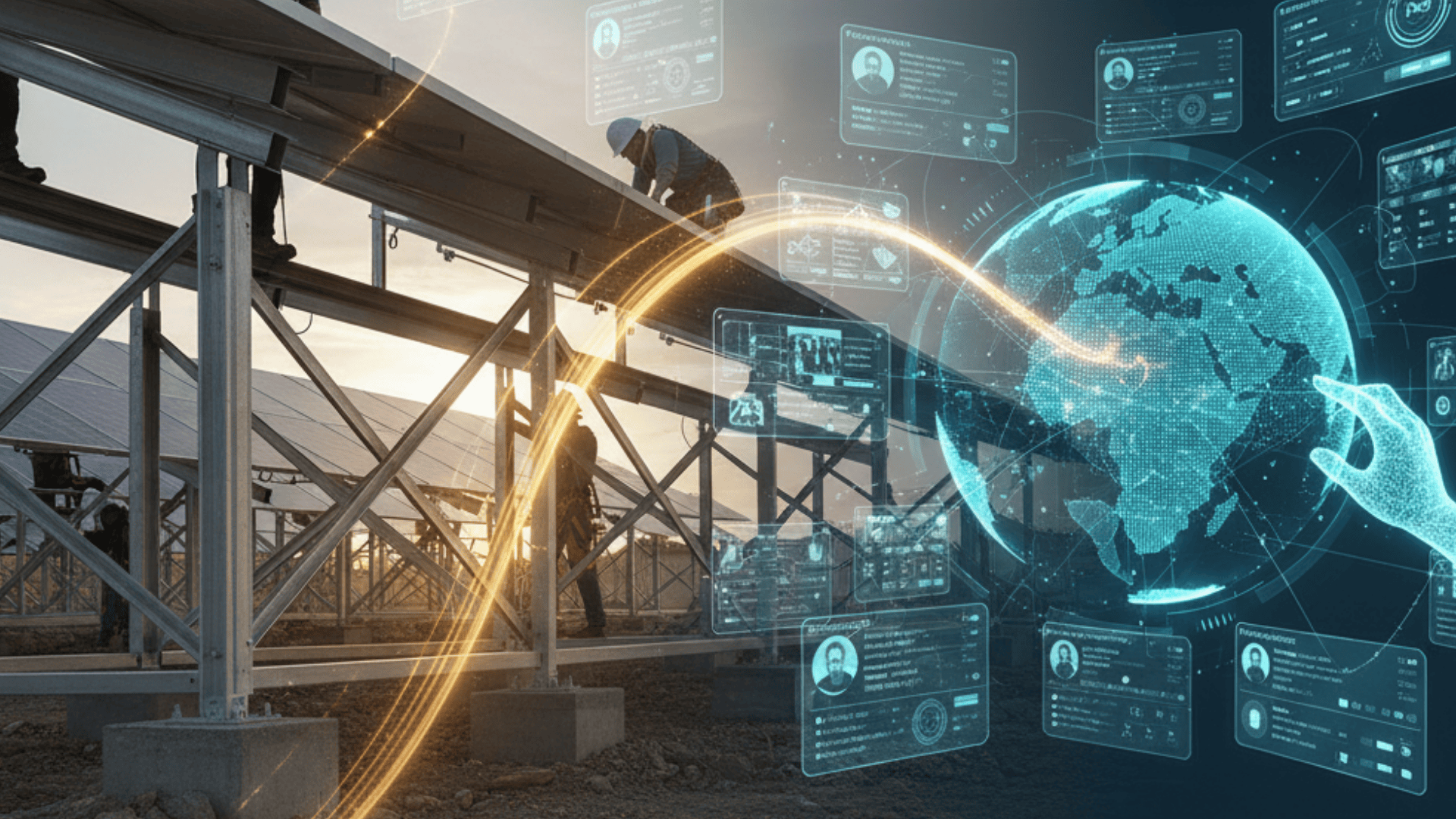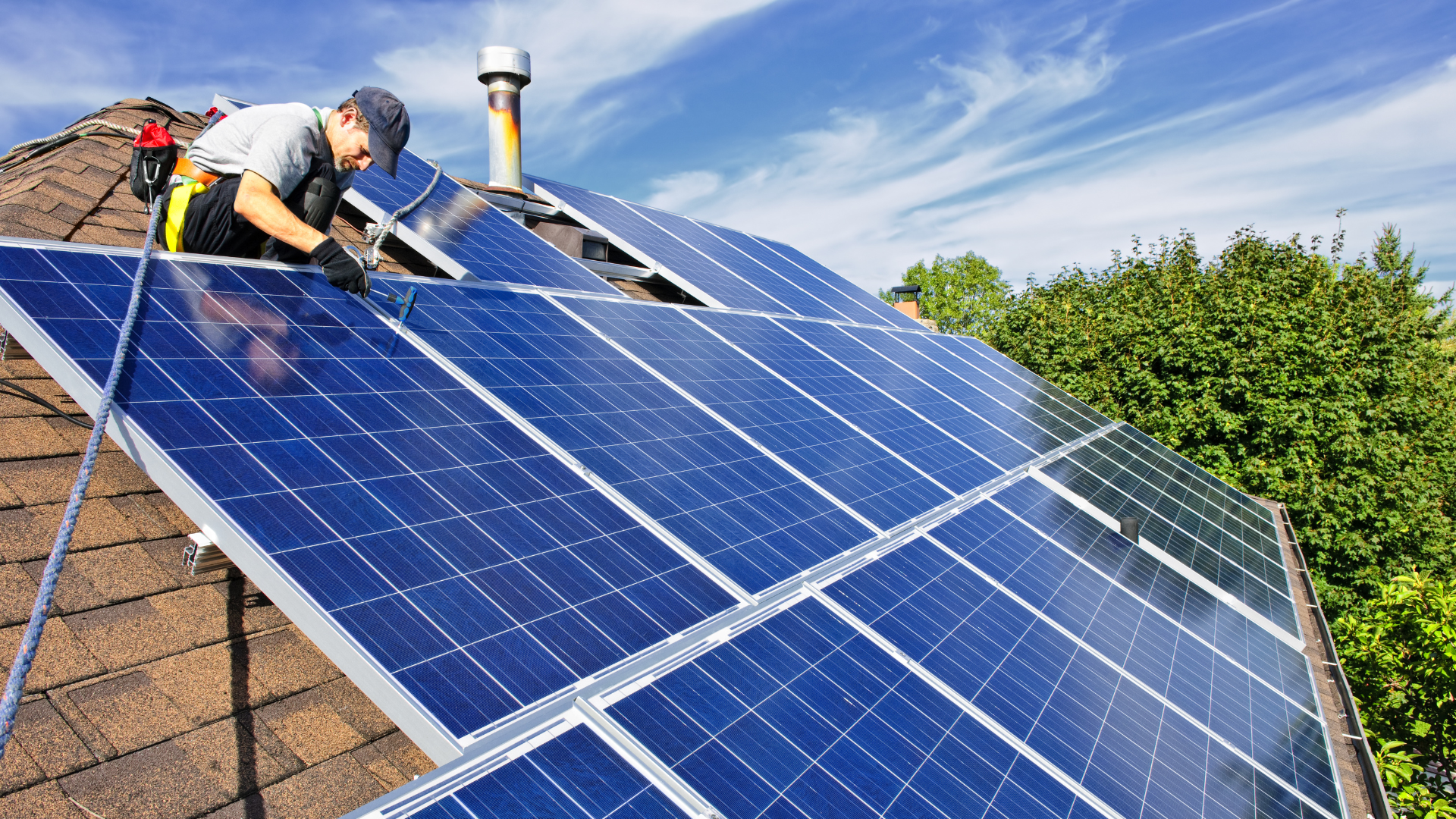June 29, 2023
Solar energy is quickly rising as one of the most reliable and cost-effective energy sources for commercial and industrial businesses. With its low per-unit cost, low operating costs, and virtually limitless range of applications, solar power can reduce energy costs from both a short-term and long-term standpoint.
As global demand for renewable energy continually rises, now is the perfect time to learn about commercial solar projects and systems in detail so you can make an informed decision on whether they’re right for your business.
In this blog post, we will explore everything you need to know about industrial solar power systems—from their basics to how they work to their benefits—so that you can decide if investing in them makes sense for your company. So let's get started!
Understanding Industrial Solar Power Systems
Industrial solar power systems harness the power of the sun to generate electricity, which can save companies a significant amount of money on their utility bills.
Not only do commercial solar systems benefit the utility company's bottom line, but they also have a positive impact on the environment by reducing carbon emissions.
Additionally, these systems can be customized to suit the specific energy needs of each individual company, making them a flexible and efficient solution for modern businesses looking to adopt more sustainable practices.
Factors to Consider Before Installing Industrial Solar Power Systems
Before installing an industrial solar power system, there are several factors that need to be considered. It is essential to have a comprehensive understanding of the energy needs, cost implications, and regulatory requirements before installing solar panels.
Energy needs of the industry
The energy needs of the industry should be carefully evaluated before designing a commercial solar energy system. The size of the system will depend on the amount of energy the industry consumes, as well as the peak demand.
Location and orientation
The location and orientation of the solar panels are crucial factors to consider. The panels should be placed in an area that receives maximum sunlight, with minimal shading. The orientation should also be optimized to maximize the energy output.
Cost of installation and maintenance
The upfront cost of installing an industrial solar power system can be high, and it is essential to evaluate the costs involved, including commercial solar installations, equipment, and maintenance.
It is also important to consider the long-term costs and savings associated with solar energy systems.
Regulatory and permitting requirements
Different states and local authorities have different regulations and permitting requirements for commercial solar systems and residential solar panel systems.
It is important to understand and comply with these requirements before installation.
Availability of incentives and financing options
There are various incentives and financing options available for commercial solar panels, such as solar tax credits, rebates, and loans. It is essential to explore these options and determine which ones are most suitable for the industry.
Designing an Industrial Solar Power System
By following these steps, the industry can design an efficient and cost-effective solar energy system that meets its energy needs while ensuring safety and sustainability.
Site assessment
The first step in designing a residential solar and power system is to conduct a site assessment. The assessment will help determine the location, solar tax credit, size, and orientation of the solar panels. Factors such as shading, slope, and local weather conditions should be considered.
Sizing the solar power system
The size of the solar power system will depend on the energy needs of the industry, as well as the peak demand. The commercial solar installation system should be designed to meet the energy needs of the industry while also being efficient and cost-effective.
Selecting the components
The components of the commercial solar panel system should be selected based on the site assessment and the energy needs of the industry. This includes selecting the solar panels, inverters, mounting systems, wiring, and other components of solar electric systems.
Designing the wiring and interconnection system
The wiring and interconnection system should be designed to ensure efficient energy transfer and system safety. This includes determining the optimal wire size, configuring the circuit breakers, and selecting the appropriate grounding systems.
Installing and Commissioning an Industrial Solar Power System
Once the commercial solar power system has been designed, the next step is to install and commission it.
It is important to work with qualified and experienced professionals during the installation process to ensure that commercial solar panel systems are installed correctly and function efficiently. This involves several steps, including:
Preparing the site for installation
The site should be prepared for the installation of the solar power system. This includes clearing the area of any debris and ensuring that the area is safe for the solar installation team.
Installing the solar panels and components
The solar panels, inverters, and other components of solar farms should be installed according to the design specifications. This includes mounting the panels on the support structure, connecting the panels to the inverters, and installing the wiring and control systems.
Connecting the system to the grid
The solar power system should be connected to the utility grid through a net metering system or a power purchase agreement (PPA). This involves connecting the system to the utility meter and ensuring that the system is configured correctly.
Testing and commissioning the system
The solar power system should be tested and commissioned to ensure that it is functioning correctly. This includes testing the voltage and current, verifying the system's performance, and ensuring that the system meets the regulatory requirements.
Maintaining and Monitoring Industrial Solar Power Systems
Maintaining and monitoring an industrial solar power system is essential to ensure that it continues to operate efficiently and effectively.
Regular maintenance and monitoring can also help to identify and resolve issues before they become more significant problems, reducing downtime and increasing the solar energy system's lifespan.
Here are some of the key steps that industries should take to maintain and monitor their solar power systems:
Regular cleaning and inspection
The solar panels should be regularly cleaned to remove any dust, debris, or other contaminants that can reduce their efficiency. The panels should also be inspected regularly for any damage, such as cracks or corrosion.
Inverter maintenance
The inverters should be checked and maintained regularly to ensure that they are functioning correctly. This includes checking the wiring and connections, verifying the output voltage and frequency, and performing firmware updates.
Battery maintenance
If the solar power system includes battery storage, the batteries should be maintained and monitored regularly. This includes checking the charge level, ensuring that the battery cells are balanced, and performing routine maintenance tasks, such as watering the batteries.
Monitoring the system performance
The industry should monitor the system's performance regularly to ensure that it is producing the expected amount of energy. This can be done using monitoring software that tracks the system's energy production and identifies any performance issues.
Responding to performance issues
If the commercial solar panel or residential solar panel system is not producing the expected amount of energy or if there are any other performance issues, the industry should respond promptly to resolve the issue.
This may involve troubleshooting the system, repairing or replacing components, or calling in professional assistance.
Conclusion
The commercial solar system offers a valuable, sustainable alternative to traditional sources of energy. Their installation and maintenance must be carefully planned and managed, taking into account the particular needs of an individual industry, the components used in the system design, and any associated regulatory or permitting requirements.
Fortunately, technical advances in the design and installation of these systems have made them increasingly accessible and cost-effective for many industrial operations. A properly designed and installed industrial solar system can provide clean energy with long-lasting reliability.
To ensure smooth operation over its lifetime, a well-maintained solar panel system should receive regular upkeep and monitoring according to established protocols. By investing in an industrial solar power system today, businesses can reap both immediate economic benefits as well as significant ecological dividends for years to come.
I agree to receive marketing messaging from Sunbase at the phone number provided above. I understand data rates will apply, and can reply STOP to OPT OUT.







